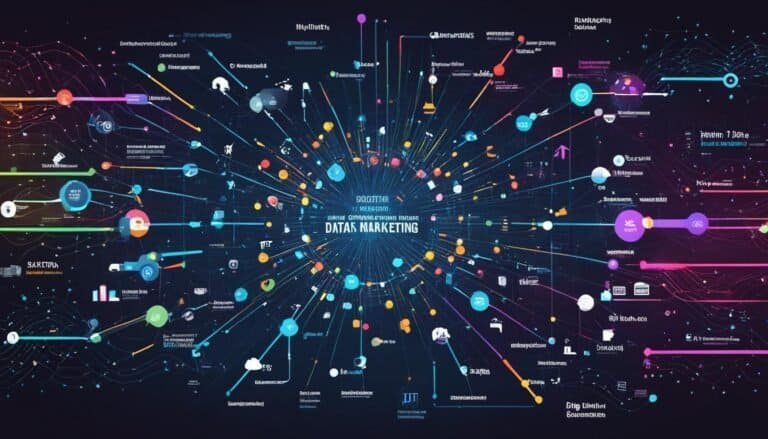Effective Customer Service Skills
In today's competitive business landscape, customer service has become a critical differentiator for companies seeking to retain and attract customers.
The ability to effectively engage and assist customers requires a set of specific skills that go beyond basic courtesy. These skills not only enhance the customer experience but also contribute to long-term customer loyalty and positive word-of-mouth referrals.
Whether it's active listening, empathetic communication, or adept problem-solving, mastering these skills is essential for any business looking to excel in the realm of customer service.
But what truly makes these skills effective, and how can they be honed to perfection?
Key Takeaways
- Active listening and empathy are crucial skills for effective customer service, including fully concentrating on the customer's words, understanding their needs, and responding appropriately.
- Effective problem-solving techniques involve encouraging diverse perspectives, empowering employees to take ownership, and proposing practical solutions while involving the customer in the decision-making process.
- Clear and respectful communication is essential, including active listening, empathy, positive language, and transparent communication to ensure understanding and maintain professionalism.
- Building rapport with customers involves building trust, personalizing interactions, and expressing empathy and understanding during challenging situations.
Active Listening Skills
Active listening is a crucial customer service skill that involves fully concentrating, understanding, responding, and remembering what the customer is saying. Reflective listening, which is the process of paraphrasing and repeating back what the customer has said, is a key aspect of active listening. This technique not only demonstrates that the customer's words are valued but also allows for any misunderstandings to be clarified.
Understanding cues from the customer's tone of voice, choice of words, and emotional state is essential in providing effective service. It enables customer service representatives to tailor their responses to meet the customer's specific needs. Moreover, nonverbal communication and body language awareness are integral to active listening. Paying attention to the customer's gestures, facial expressions, and overall body language can provide additional insights into their feelings and concerns, which is valuable for offering empathetic and personalized support.
Empathy in Customer Interactions
Understanding and responding to the emotional cues and concerns of customers is an essential aspect of providing exceptional customer service. Empathy plays a crucial role in creating a positive customer experience. It involves not only recognizing the emotions of the customer but also understanding the situation from their perspective.
Here are some key aspects to consider when incorporating empathy into customer interactions:
- Emotional Intelligence: Developing emotional intelligence is vital in empathizing with customers. It enables customer service representatives to recognize and understand the emotions of customers, allowing for a more personalized and empathetic response.
- Active Listening: Actively listening to customers and acknowledging their feelings is a fundamental component of empathy. It shows that their concerns are being taken seriously and helps in building rapport.
- Customer Perspective: Empathy involves seeing the situation from the customer's point of view. Understanding their perspective can help in addressing their concerns more effectively.
- Genuine Concern: Displaying genuine concern for the customer's well-being can significantly impact their overall satisfaction. It creates a sense of trust and reassurance.
- Customized Solutions: Applying empathy in customer interactions allows for customized solutions that cater to the specific emotional needs of the customer, leading to a more positive experience.
Effective Problem-Solving Techniques

To effectively address customer issues and improve satisfaction, customer service representatives must employ efficient problem-solving techniques that prioritize swift resolution and customer-centric outcomes. Collaborative brainstorming is an effective method for generating innovative solutions to complex customer problems. By encouraging team members to contribute their ideas, customer service representatives can leverage diverse perspectives to identify and implement effective solutions. This approach fosters a sense of collective responsibility and empowers employees to take ownership of the customer experience.
| Pros | Cons |
|---|---|
| Encourages diverse perspectives | Requires time for collaboration |
| Fosters a sense of collective responsibility | Potential for conflicting ideas |
| Empowers employees to take ownership | Difficulty in implementing all ideas |
Using collaborative brainstorming, customer service representatives can tap into the collective wisdom of the team, leading to more comprehensive and innovative problem-solving techniques. This not only creates a more dynamic and engaged workforce but also results in a higher level of customer satisfaction and loyalty.
Clear and Respectful Communication
Building on the foundation of effective problem-solving techniques, clear and respectful communication is paramount in ensuring positive interactions with customers. When communicating with customers, it is essential to employ assertive communication, which involves expressing thoughts and feelings clearly and directly while respecting the customer's perspective. Additionally, providing constructive feedback is crucial in guiding customers towards a resolution while maintaining a respectful tone.
Here are key elements to consider when practicing clear and respectful communication:
- Active Listening: Engage in active listening by giving full attention to the customer, acknowledging their concerns, and providing appropriate responses.
- Empathy: Show empathy towards the customer's situation, demonstrating an understanding of their emotions and experiences.
- Positive Language: Utilize positive language to convey messages, focusing on what can be done rather than what cannot.
- Clarity and Transparency: Communicate clearly and transparently, ensuring that the customer fully comprehends the information provided.
- Professional Tone: Maintain a professional tone throughout the interaction, exhibiting respect and courtesy at all times.
Building Rapport With Customers

In fostering strong connections with customers, establishing genuine rapport is essential for cultivating lasting and mutually beneficial relationships. Building rapport with customers involves trust building and creating a strong customer connection.
Trust building is crucial as it allows customers to feel confident in the company and its products or services. This can be achieved through consistent and reliable communication, delivering on promises, and being transparent in all interactions. Additionally, actively listening to customers' needs and concerns helps in building trust and rapport.
Creating a strong customer connection involves understanding their preferences, engaging in personalized interactions, and showing genuine interest in their well-being. By recognizing and acknowledging customers as individuals with unique needs, a deeper connection can be established. This can be further reinforced by remembering important details about customers and using this information to personalize future interactions. Furthermore, expressing empathy and understanding during challenging situations can significantly strengthen the bond with customers.
Handling Challenging Situations
During challenging situations, effective customer service professionals demonstrate composure and empathy to resolve issues and maintain positive customer relationships. When faced with difficult customer interactions, it is essential to employ de-escalation techniques and conflict resolution strategies to address the situation effectively.
Here are some key strategies to handle challenging situations in customer service:
- Active Listening: Engage in active listening to understand the customer's concerns fully. This demonstrates empathy and helps in identifying the root cause of the issue.
- Remain Calm: Maintain a calm and composed demeanor, even in the face of hostility. This can help to de-escalate the situation and prevent it from escalating further.
- Empathize: Show understanding and empathy towards the customer's frustrations. Acknowledge their feelings and reassure them that their concerns are being taken seriously.
- Offer Solutions: Propose practical solutions to address the customer's concerns. Providing options and alternatives can help in resolving the issue more effectively.
- Follow-Up: After the situation has been resolved, follow up with the customer to ensure that they are satisfied with the outcome. This demonstrates a commitment to customer satisfaction and can help in maintaining a positive relationship.
Conclusion
In the realm of customer service, effective communication, empathy, and problem-solving skills are essential for building strong relationships with customers. These skills act as a bridge between the company and its clients, allowing for a smooth and pleasant interaction.
Like a skilled conductor leading an orchestra, customer service representatives must orchestrate their skills to create a harmonious and satisfying experience for customers.
Mastering these skills will lead to improved customer satisfaction and loyalty, ultimately benefiting the company in the long run.







